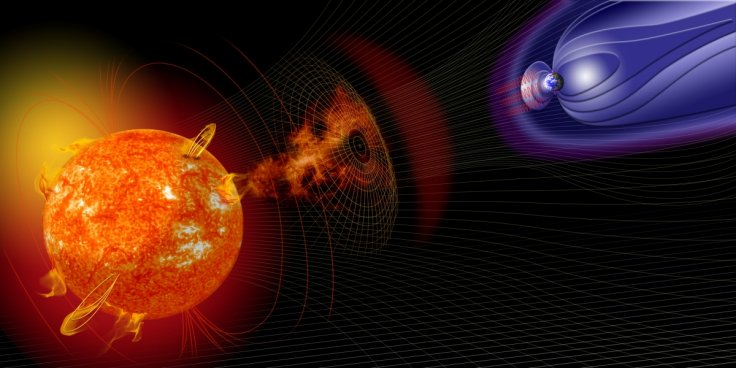Earth is currently getting bombarded by a stream of high-energy solar winds emitted by the Sun. Due to the direction of the solar winds, cracks are beginning to form in the planet's magnetosphere.
The report about the current solar wind forecast was made by SpaceWeather.com. It is not yet clear how long the cosmic storm happening outside Earth will last.
Latest Solar Weather Forecast

As indicated in the data collected by the site, the high-energy solar winds emitted by the Sun are currently hitting Earth at speeds of about 414 kilometres per second. Fortunately, Earth is protected by the magnetosphere, which is a bubble formed by the planet's magnetic field.
As the solar winds from the Sun hit the magnetosphere, the collision occurs in a region known as the magnetopause. Most of the time, the magnetosphere is able to keep the solar winds out and prevent them from affecting Earth.
Cracking The Magnetosphere

However, in some cases, solar winds can cancel out portions of the magnetosphere, causing cracks in the magnetic field to form. This occurs when the Sun's magnetic field points south, which is a condition referred to by scientists as southward Bz or BsubZ.
"Earth's magnetic field points north at the magnetopause. If the Sun's magnetic field points south -- a condition scientists call "southward Bz" -- then the Sun's magnetic field can partially cancel Earth's magnetic field at the point of contact," SpaceWeather.com explained.
Effects Of Solar Winds On Earth
Cracks in the magnetosphere mean that solar winds could penetrate through Earth's magnetic field and affect the planet. Fortunately, the solar winds that are currently battering the planet are not that powerful. Unlike major solar events that can cause electrical disruptions and power outages, the stream of solar winds hitting the magnetosphere will most likely only affect the atmosphere. As the solar winds interact with Earth's atmosphere, they could cause natural light displays known as auroras to form over affected regions.
"The solar wind blowing around Earth is unsettled with periods of negative BsubZ opening small cracks in Earth's magnetic field," SpaceWeather.com stated. "Gaseous material flowing through the cracks could spark Arctic auroras."









